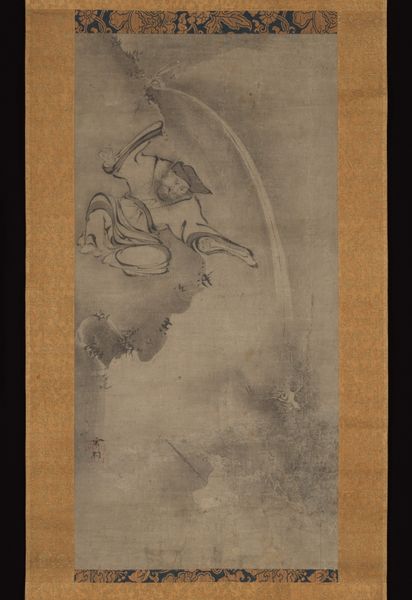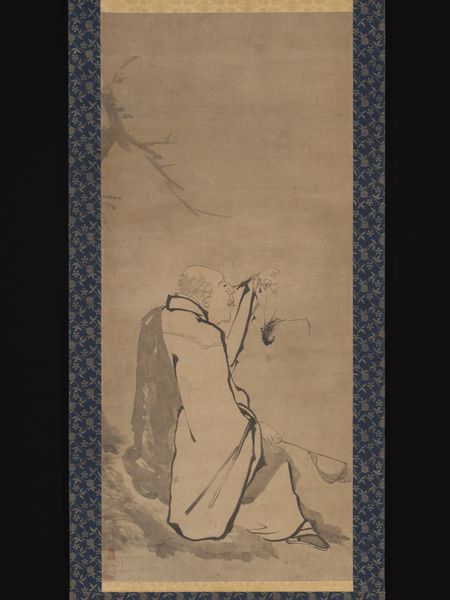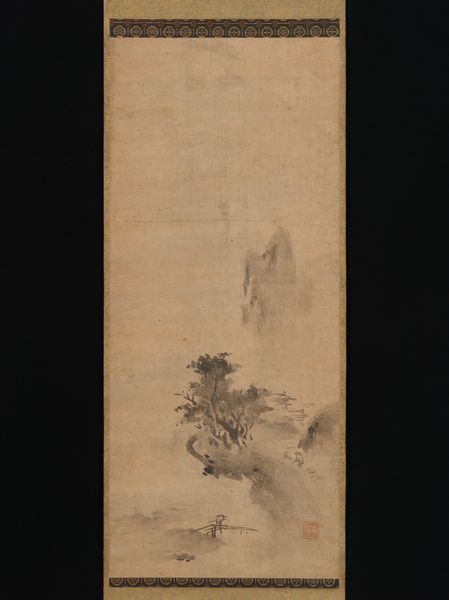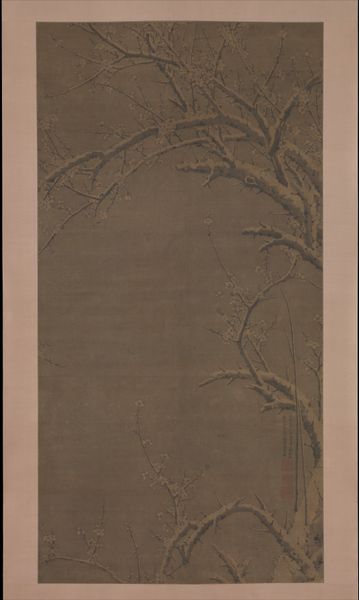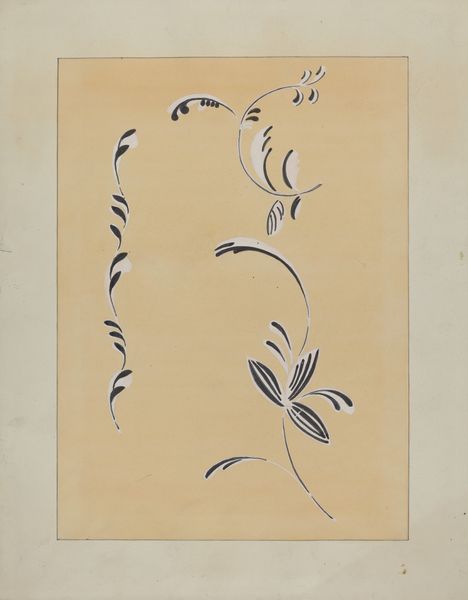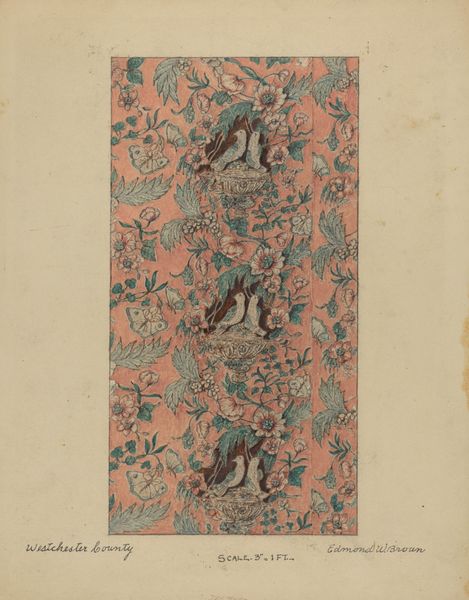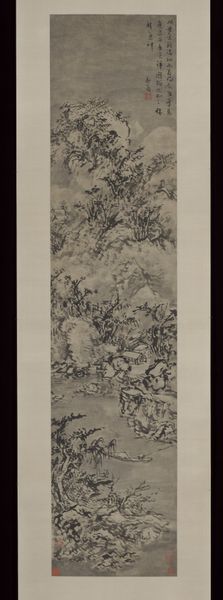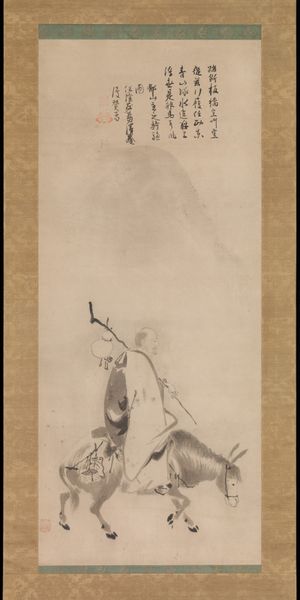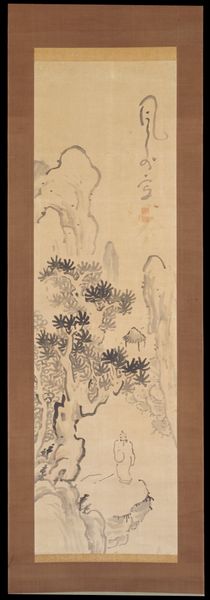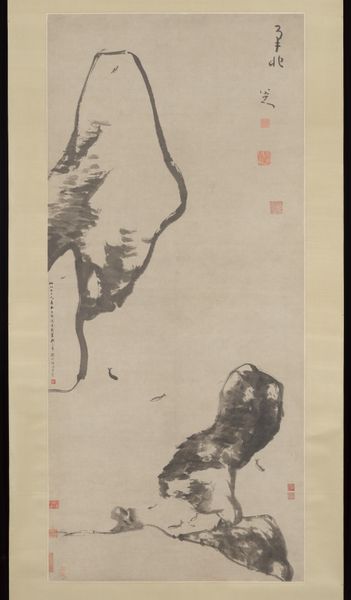
drawing, paper, ink
#
drawing
#
asian-art
#
ukiyo-e
#
figuration
#
paper
#
ink
#
calligraphy
Dimensions: Image: 27 1/8 x 8 1/8 in. (68.9 x 20.6 cm) Overall with mounting: 60 1/2 x 12 15/16 in. (153.7 x 32.9 cm) Overall with knobs: 60 1/2 x 14 13/16 in. (153.7 x 37.6 cm)
Copyright: Public Domain
Yokoya Sōmin created this ink on paper ‘Chinese Lion’ scroll painting during the Edo period in Japan. The Edo period, lasting from 1603 to 1868, was a time of relative peace and isolation under the rule of the Tokugawa shogunate. During this period, the arts flourished, influenced by both native traditions and selective interactions with other cultures. The Chinese lion, or shishi, held symbolic importance. Often seen guarding temples and sacred spaces, the shishi was a protector against evil, embodying courage and strength. Sōmin’s rendition deviates from traditional depictions. His lion is playful and whimsical, far from the fierce guardian. The loose brushstrokes and simple composition infuse the artwork with a sense of spontaneity and approachability, reflecting the artist's personal interpretation of a cultural icon. By softening the image of the shishi, Sōmin may have been inviting viewers to reconsider established symbols. The painting reflects the human desire to reconcile power with vulnerability, and tradition with individuality.
Comments
No comments
Be the first to comment and join the conversation on the ultimate creative platform.
